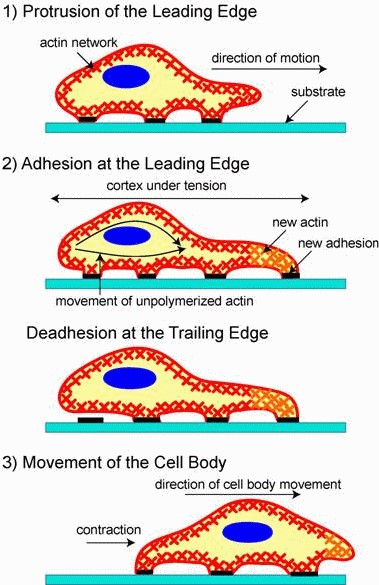The Role of Water in Cell Mechanics – A Seminar with Dr. Sean Sun
By Emily Myers, PhD student of Department of Human Nutrition, Foods, & Exercise and Water IGEP of Virginia Tech. Inspired by Virginia Tech Life Science Seminar, “Water Dynamics in Cell Mechanics, Cell Shape and Cell Motility” By Sean Sun, Dept of Mechanical Engineering and Dept of Biomedical Engineering, Johns Hopkins University.
Dr. Sean Sun recently spoke at the Virginia Tech Life Science Seminar. His seminar on the “Water Dynamics in Cell Mechanics, Cell Shape and Cell Motility” discussed the physical, biological, and chemical qualities of water that impact cell mechanics. Dr. Sun’s research focuses on understanding how cells generate motion. While the molecular factors are well understood, understanding what allows cells to generate force requires more exploration. Cells are changing shape all the time as can be seen in canonical models of cell force generated by actin and myosin.

Because cells are 70% water by mass, Dr. Sun shared how his research has demonstrated the impact of water on cell shape and movement. Cell membranes are permeable to water, allowing them to regulate osmotic pressure. These pressurized vesicles contain mechanisms for both passive and active transport across the membrane, which are believed to contribute to cells ability to generate force. When passing water through the cell membrane, aquaporin functions as a special channel allowing water to move passively based on hydrostatic or osmotic pressure.
Dr. Sun’s lab has focused specifically on the role of the cell cortex, the area below the cell membrane, and how it reacts to applied osmotic and mechanical pressure. By measuring actomyosin cortex activity and myosin contractile stress, they can measure how cells modulate based on external forces, such as hypotonic and hypertonic shock. These models allow us to predict how cells will respond to certain environments and have a better understanding of their ability to generate force. A non-uniform distribution of ion channels and pumps on one side of the cell is called the “osmotic engine model” and may allow cells to generate motility.
This seminar was a fascinating discussion on the importance of water in the adaptability of cells. During Dr. Sun’s introduction, it was shared that he is a member of three different departments at Johns Hopkins University, demonstrating the interdisciplinary nature of his research. Understanding the physics, biology, and chemistry of water is a crucial skill needed to pursue this type of work. It was a very thought-provoking seminar that blended information from a variety of disciplines.


